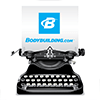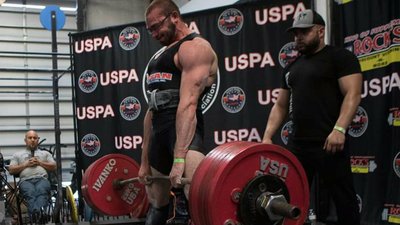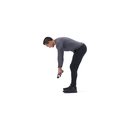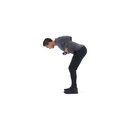Mark Bell, professional powerlifter and owner of the Super Training Gym in West Sacramento, California, has seen some powerful people swagger through his facility. But when a guy from Lubbock, Texas, named Cailer Woolam strolled in and started doing 500-pound bent-over barbell rows, Bell was taken aback.
"OK, after a certain point it just gets to be flat-out stupid," he says. "There are people dying to deadlift that much, and he's rowing it like it's nothing."
Compared to Woolam's deadlift record, Bell was right: It really was nothing—at least not for Woolam, who works as an assistant grocery manager at a supermarket when he's not lifting ungodly amounts of weight in the gym. Competing in the 198-pound class, Woolam has officially deadlifted 900 pounds. In the 220-pound class, he's gotten up to 927 pounds, making him the current world record holder for that class. And that's not even the amazing part. There's the insane amount of weight he lifts—and then there's way he lifts it.
"Cailer is an exceptional and explosive lifter, probably the most explosive sumo deadlifter I've ever seen in my life," Bell says. "It's unbelievable how fast this guy is able to lift these enormous weights and maintain his form—and how he can hold onto that much weight with a hook grip."
Woolam encourages anyone interested in improving their deadlifts to work all five of these exercises into their weekly workout plans. Go light when you're hitting the same muscles with other exercises, but when you're not, go after these moves with a vengeance.

BodyFit
$6.99/month- 2,500+ expert-created single workouts
- 3,500+ how-to exercise videos
- Detailed workout instruction
- Step-by-step workout tips
- Training at gym or at home
- Access to Workout Plans
- Access to Bodyfit App
- Store Discounts
Already have a Bodybuilding.com account with BodyFit? Sign In

What comes with BodyFit?

- Instructional Videos
Don't risk doing a workout improperly! Avoid injury and keep your form in check with in-depth instructional videos.

- How-to Images
View our enormous library of workout photos and see exactly how each exercise should be done before you give it a shot.

- Step-by-Step Instructions
Quickly read through our step-by-step directions to ensure you're doing each workout correctly the first time, every time.
Technique Tips
Bent-Over Barbell Row
The unique aspect about Woolam's rows is the sheer amount of weight he lifts. He didn't start out that way. Back in December 2015, he was rowing 275 pounds, which is good but not eye-popping. Once he noticed the connection between rowing heavy weights and his deadlift, he doubled down on his rows. A year and a half later, he's rowing 500 pounds, sometimes more.
"As soon as I realized the rows were helping my deadlift, I made them a priority in my workouts," Woolam says. "When I made them a priority, my delts started blowing up. And the stronger my delts got, the more I could deadlift."
Woolam positions himself in front of the bar much like he would for a deadlift, but he moves his hands and feet a little wider. As he descends into position, he gets his back tight to prepare for the weight, and visualizes himself literally ripping the weight off the floor. The rest of the concentric portion follows normal form, except that he's rowing a hell of a lot of weight.
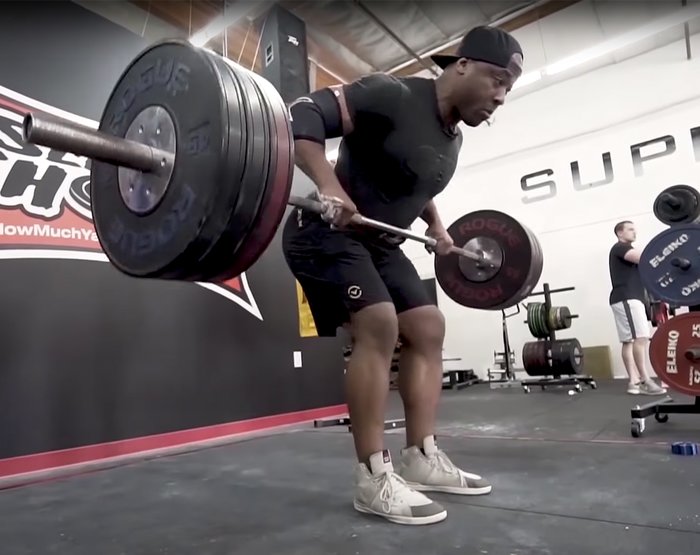
When his daily workout includes other heavy lifts, he'll row with low weight and higher reps. On days when he's doing the rows specifically to improve his deadlift, he'll warm up with those low weights, then go super heavy for very low reps.
Weighted Pull-Ups
When Woolam is going heavy on the rows, he'll go light on the pull-ups—light for him, anyway
"On those days, I'll just strap on a 45-pound plate and see how many reps I can do for 5 sets," he says.

When he goes heavy on the pull-ups, he'll add more plates and do sets of 5 reps.
Shrug
Woolam chooses not to use a rack or machine for shrugs. He'll start either off the floor or with no more than a 4-inch box.
"If you're doing a shrug out of a rack, you tend to do way too much weight," Woolam says. "As far as I'm concerned, if you can't deadlift it, you shouldn't shrug it. You're just going to hurt yourself."
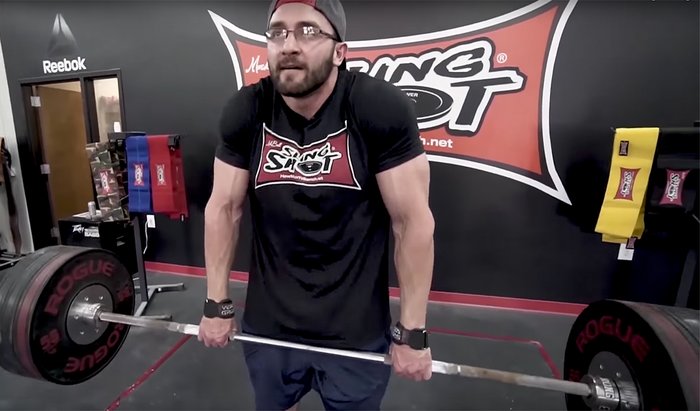
For someone who's concerned about lifting too much, Woolam lifts a lot, shrugging 700-800 pounds. Woolam says he mixes in his shrugs on shoulder day, along with his overhead and military presses, laterals, and flyes. He's found that when he tries to do heavy shrugs on back day or on his main deadlift day, he can't lift enough weight to benefit much from them. There's not a whole lot of movement in a shrug, he says, but when you get to the point where you can do a few with very heavy weights, you can blow your deadlifts out of the water.
Glute-Ham Raise (GHR)
Woolam's first piece of advice for GHRs is to go light. The goal here is to get a good burn, not pile on the plates.
"I've noticed in the past that when I worried too much about the weight, things started to hurt," he says. "Going heavy on GHRs is a great way to tear a hamstring."
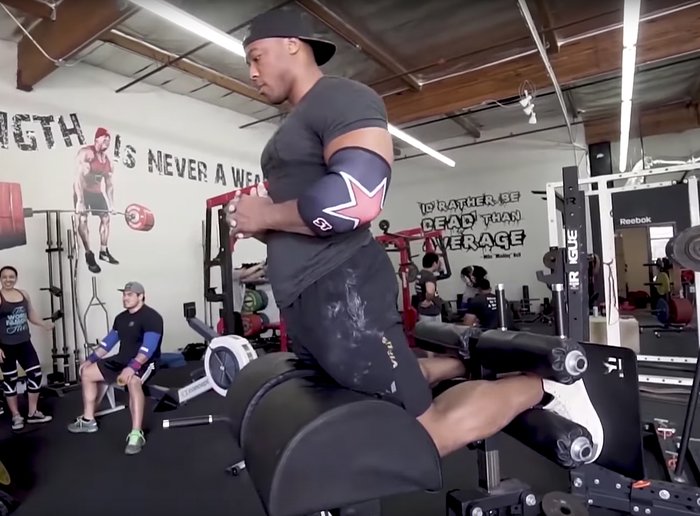
But if your bodyweight seems too light, go ahead and add some weight. Just be careful.
Since Woolam uses similar muscle groups for both shrugs and deadlifts, he improves his mind-muscle coordination by holding his hands as if he's lifting a very heavy barbell when he comes up. When he reaches the top of the lift, he pretends he's locking out that weight.
Reverse Hypertension
Again, Woolam isn't concerned about lifting a lot of weight on this movement. Reverse hypers are more about doing lots of reps to stimulate blood flow to the lower back and to decompress the spine, he says. Even when you go light, this move will build strength in your lower back, which can help with your deadlifts and reduce any soreness or stiffness in that area.
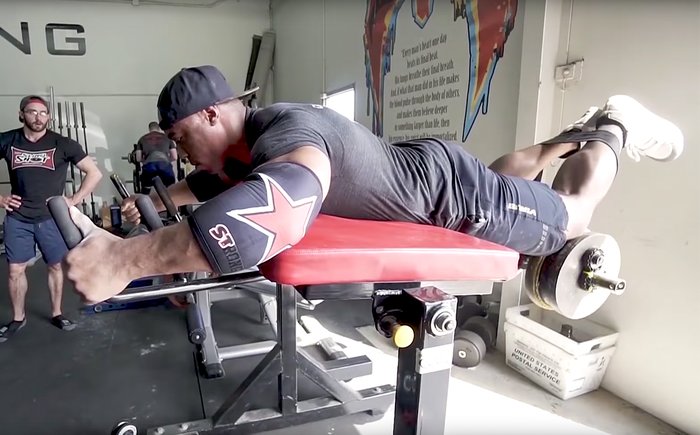
"I do a lot of reverse hypers these days, mostly to build strength," Woolam says. "I'll also throw in a few sets if I'm having a lighter workout or want to get in a little bit more hypertrophy. I'll do them if my lower back feels stiff, sore, or just doesn't feel right. I'll just hit a few hypers to support active recovery and get some blood flowing in my lower back. They help my deadlift, and they just make my whole body feel good."
